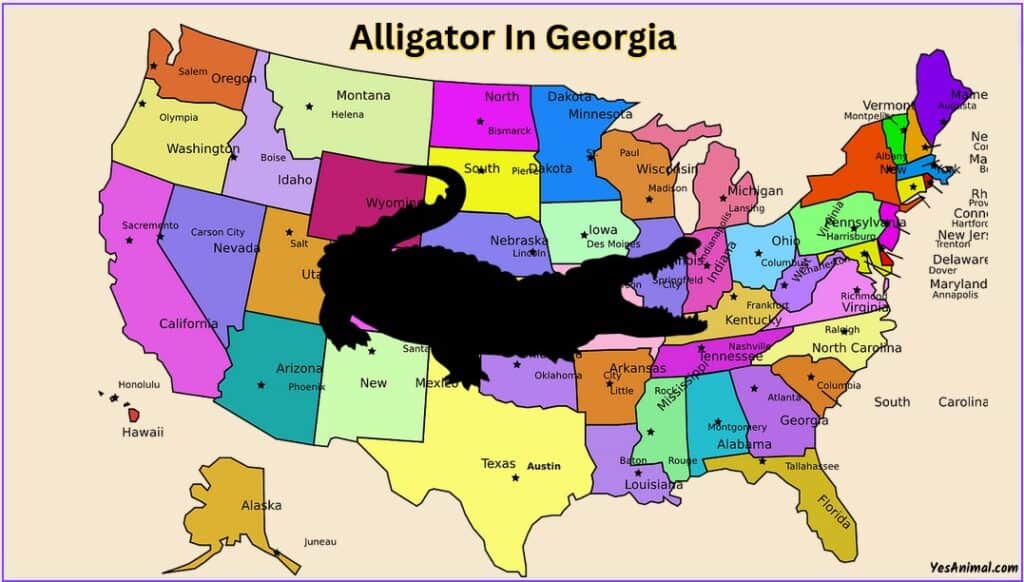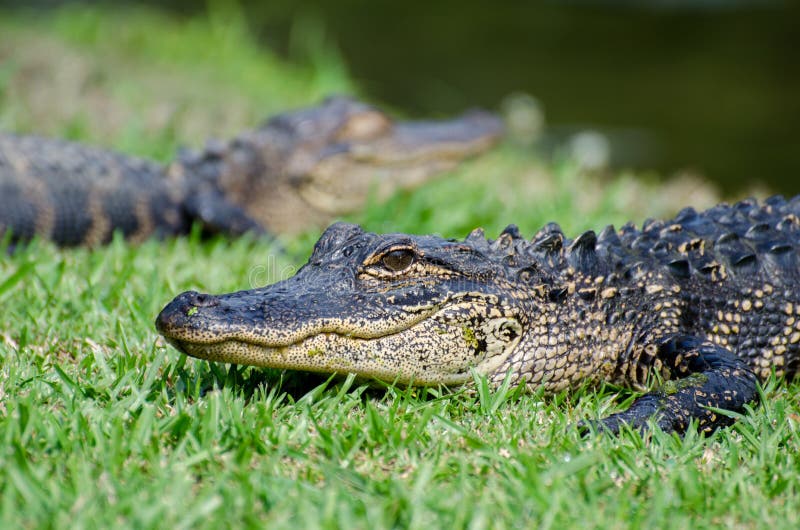There’s something undeniably captivating about Georgia’s state parks, especially when it comes to their most famous residents—those prehistoric-looking creatures we all know as alligators. Whether you’re a nature enthusiast, an adventure seeker, or just someone who loves a good wildlife story, Georgia’s state parks offer a unique glimpse into the lives of these magnificent reptiles. But don’t worry, they’re not as scary as you might think!
Imagine strolling through lush greenery, listening to the sounds of nature, and suddenly spotting one of these ancient creatures sunbathing by the water. It’s a moment that reminds you how incredible and unpredictable the natural world can be. Georgia’s state parks are home to some of the largest populations of alligators in the southeastern United States, making them a must-visit destination for anyone curious about these fascinating animals.
From learning about their behavior to understanding how they contribute to the ecosystem, this article dives deep into the world of alligators in Georgia state parks. So grab your hiking boots, sunscreen, and a sense of adventure because we’re about to embark on an unforgettable journey!
Read also:Heidi Klum Swimsuits Your Ultimate Guide To Style Glamour And Confidence
Table of Contents
- Introduction to Georgia State Park Alligators
- Alligator Basics: What You Need to Know
- Best Georgia State Parks to Spot Alligators
- Understanding Alligator Behavior
- The Role of Alligators in the Ecosystem
- Safety Tips for Encountering Alligators
- Conservation Efforts for Georgia Alligators
- Fun Facts About Alligators
- Seasonal Activities with Alligators
- Conclusion: Why Georgia State Parks Rock
Introduction to Georgia State Park Alligators
Georgia state parks are like nature’s playground, filled with stunning landscapes, diverse wildlife, and some of the most intriguing creatures on the planet—yes, we’re talking about alligators. These reptiles have been around for millions of years, and they’re still going strong in the swamps, rivers, and lakes of Georgia. If you’ve ever wondered what it’s like to see one up close, this is your chance.
Georgia’s alligator population is thriving, thanks to conservation efforts and the state’s natural habitat. But before you pack your bags and head out, it’s important to know a little bit about these animals. They’re not just big lizards; they’re complex creatures with fascinating behaviors and a crucial role in the ecosystem.
So, whether you’re planning a day trip or a full-blown adventure, Georgia’s state parks offer the perfect setting to learn about and appreciate these incredible animals. Let’s dive in!
Alligator Basics: What You Need to Know
Physical Characteristics
Let’s start with the basics. Alligators are large reptiles that belong to the crocodilian family. They can grow up to 14 feet long and weigh over 1,000 pounds. Their tough, armored skin and powerful tails make them formidable predators, but they’re also surprisingly graceful in the water.
One of the coolest things about alligators is their teeth. They have around 80 teeth in their jaws, which they use to grab and hold onto prey. And if they lose a tooth? No problem! They can regrow them throughout their lives.
Where Do They Live?
Georgia’s alligators are mostly found in freshwater environments like rivers, lakes, and swamps. They prefer warm, humid climates, which makes Georgia’s state parks an ideal habitat. Some of the best places to spot them include the Okefenokee Swamp, Altamaha River, and the Satilla River.
Read also:Magic Johnsons New Wife 2024 The Inside Story You Wont Want To Miss
But here’s the thing: alligators aren’t just limited to these areas. They can be found in almost any body of water in Georgia, so keep your eyes peeled!
Best Georgia State Parks to Spot Alligators
Georgia has over 60 state parks, and many of them are home to alligators. Here are some of the best parks to visit if you want to see these amazing creatures:
- Okefenokee Swamp Park: Known as one of the largest swamps in the world, this park is a haven for alligators. You can take a guided boat tour to get up close and personal with them.
- Harris Neck National Wildlife Refuge: This park offers stunning views of the Altamaha River and is a great spot for alligator sightings.
- Reynolds Lake Oconee State Park: With its vast lake and wooded trails, this park is perfect for spotting alligators in their natural habitat.
No matter which park you choose, you’re sure to have an unforgettable experience. Just remember to keep a safe distance and respect their space!
Understanding Alligator Behavior
One of the most fascinating things about alligators is their behavior. They’re not just mindless predators; they’re intelligent and social animals with complex habits.
Hunting and Feeding
Alligators are opportunistic hunters, meaning they’ll eat pretty much anything they can catch. Their diet includes fish, birds, turtles, and even small mammals. They use a technique called "ambush hunting," where they wait patiently for prey to come close before striking with incredible speed.
Mating and Nesting
During the spring and summer months, alligators enter their mating season. Male alligators perform elaborate displays to attract females, including bellowing and head-slapping. Once they’ve mated, female alligators build nests out of vegetation and mud to lay their eggs.
After about 60-70 days, the eggs hatch, and the mother alligator helps her babies out of the nest. She’ll even carry them in her mouth to the water, where they’ll learn to fend for themselves.
The Role of Alligators in the Ecosystem
Alligators play a vital role in maintaining the balance of Georgia’s ecosystems. They’re considered a keystone species, meaning their presence affects the entire food chain.
By controlling the population of prey animals, alligators help prevent overgrazing and habitat destruction. They also create "gator holes," which are small ponds that provide water and shelter for other animals during dry spells.
In short, alligators are essential to the health and diversity of Georgia’s wetlands. Without them, the ecosystem would suffer.
Safety Tips for Encountering Alligators
While alligators are generally shy and prefer to avoid humans, it’s still important to take precautions when visiting Georgia’s state parks. Here are some safety tips to keep in mind:
- Keep a safe distance of at least 60 feet from alligators.
- Never feed alligators, as it can make them lose their natural fear of humans.
- Stay on designated trails and boardwalks to avoid surprising an alligator.
- Keep pets on a leash and away from water sources.
By following these guidelines, you can enjoy your visit to Georgia’s state parks while staying safe and respecting the wildlife.
Conservation Efforts for Georgia Alligators
Georgia’s alligator population has made a remarkable comeback thanks to conservation efforts. In the 1960s, alligators were on the brink of extinction due to overhunting and habitat loss. But thanks to laws protecting them and efforts to restore their habitats, their numbers have rebounded.
Today, the Georgia Department of Natural Resources (DNR) monitors alligator populations and implements programs to ensure their survival. They also work with local communities to educate people about living safely with alligators.
Fun Facts About Alligators
Here are some fun facts about alligators that might surprise you:
- Alligators can live up to 50 years in the wild.
- They have an amazing sense of smell and can detect prey from miles away.
- Female alligators are fiercely protective of their young and will defend them fiercely.
- Alligators can swim up to 20 miles per hour and run short distances on land at speeds of up to 11 miles per hour.
Who knew these creatures were so fascinating?
Seasonal Activities with Alligators
Georgia’s state parks offer a variety of seasonal activities that allow you to experience alligators in different ways:
Spring
Spring is the perfect time to see alligators basking in the sun. The weather is warm, and they’re more active as they prepare for mating season.
Summer
Summer is when alligators are most visible, especially in the early morning and late afternoon. Take a guided tour or go on a self-guided hike to spot them in their natural habitat.
Fall and Winter
During the cooler months, alligators become less active and may be harder to spot. However, this is a great time for birdwatching and other outdoor activities.
Conclusion: Why Georgia State Parks Rock
Georgia’s state parks are a treasure trove of natural beauty and wildlife, and alligators are just one of the many reasons to visit. From learning about their fascinating behavior to understanding their role in the ecosystem, these creatures offer a glimpse into the wonders of the natural world.
So next time you’re planning a trip to Georgia, don’t forget to include a visit to one of the state parks. And remember, always respect the wildlife and follow safety guidelines. Who knows? You might just spot an alligator or two!
We’d love to hear about your experiences with alligators in Georgia’s state parks. Leave a comment below or share this article with your friends. Together, let’s celebrate the amazing world of alligators and the beautiful parks they call home.

![Are There Alligators In [AND HOW SAFE IS IT]](https://leozoo.org/wp-content/uploads/2022/11/Alligator-in-the-swamp-in-Georgia.jpg)
